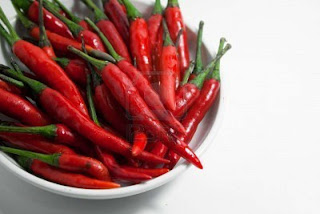 Chilli is one of the most valuable crops of India. It is grown almost throughout the country. Different varieties are grown for vegetables, spices, condiments, sauces and pickles. Chilli is also known as ‘hot pepper’ and capsicum as ‘bell pepper.’ The Portuguese brought capsicum from Brazil to India during the year 1584. Chilli is a fruit of the plants ‘capsicum annuum’ and ‘capsicum frutecens’ that come from the genus ‘capsicum,’ belonging to the family of ‘Solanaceae,’ which also includes tomato and potato. These fruits are small in size and known for their sharp acidic flavour and colour. Currently, chillies are used throughout the world as a spice and also in the making of beverages and medicines. If some varieties of chilies are famous for red colour because of the pigment ‘capsanthin,’ others are known for biting pungency attributed to ‘capsian.’ India is the only country which is rich in many varieties with different quality factors
Chilli is one of the most valuable crops of India. It is grown almost throughout the country. Different varieties are grown for vegetables, spices, condiments, sauces and pickles. Chilli is also known as ‘hot pepper’ and capsicum as ‘bell pepper.’ The Portuguese brought capsicum from Brazil to India during the year 1584. Chilli is a fruit of the plants ‘capsicum annuum’ and ‘capsicum frutecens’ that come from the genus ‘capsicum,’ belonging to the family of ‘Solanaceae,’ which also includes tomato and potato. These fruits are small in size and known for their sharp acidic flavour and colour. Currently, chillies are used throughout the world as a spice and also in the making of beverages and medicines. If some varieties of chilies are famous for red colour because of the pigment ‘capsanthin,’ others are known for biting pungency attributed to ‘capsian.’ India is the only country which is rich in many varieties with different quality factors
This crop falls in the same family as tomatoes, potatoes and tobacco. The scientific name is Solanaceae. So When growing them you should avoid mixing or growing next to each other since diseases and pests that affect them are the same. It is advised to grow them far away from each other.
History of Chillies
First cultivated by the people of Central and South America in around 3000BC. Columbus brought seeds back to Europe in 1493, and from there it has spread to the entire world.
Types of Chillies
Several varieties of chillies which vary in shape and colour are available.
Sweet Chilli
• A chilli that is so mild you can even give it to children. About 6-8 cm long, bright yellow-lime green skin and pointed at one end.
Chilli Baby Hot
• A very hot tiny chilli 1-2 cm long. The skin colour can range from lime yellow to orange and red. Most people will find these very hot even without the seeds. Used mainly in Thai, Chinese, Indonesian, Malaysian, Indian or Spanish dishes.3
Red Chilli
• Similar in size and shape to the green chilli, but with more sting to its flavour. Good idea to mix the red and green chillies together in any dish.
Bell Chilli Red/Green
• This chilli is shaped like a bell. The red ones are hot the green variety can be medium to hot and are excellent for pickling.
Mexican Hot Chilli
• One of the hottest chillies. It has a bright green skin, is 6 - 8 cm long and is pointed at one end.
Jalapeno Chilli
• The world famous chillie.This fiery hot chilli is the one by which all other chillies are judged. Ripened they can be dark green or red. They have a very thick fleshy skin and are sausage shaped with a blunt end. If you try them, beware they are very hot!!!
Green Chilli
•A long slender green chilli, 6-8 cm long, pointed at one end. It has a medium flavour that is easily eaten by most people who are not use to chilli
Source - Internet



















